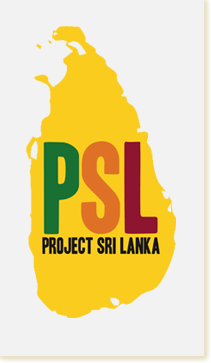Poya Day
The Esala Poya day is the climax of 10 days and nights during the month of Esala (July/August) and ends on the ‘Nikini’ full moon. Every Poya day is a holiday and, despite the fact that Sri Lanka enjoys over 26 public holidays a year due to the wide variety of religious faiths (infact it is difficult to endure a full working week here!) the Esala Poya day is one of the most eagerly anticipated events of the year. The event is marked with national recognition at the Kandy Esala Perahera – which 4 of our group were lucky enough to witness – and smaller festivals are held throughout the country.
Eager for us to gain the Poya day’ experience first-hand. Miss Jaggety – Head of the International Office at the University of Ruhuna and coodinater of all things exciting – had arranged a jam packed day for us! We enjoyed an amazing breakfast at her house with her entire family – having now got happily used to eating curry and rice for breakfast, as well as for lunch and dinner!
We were then taken on a trip across the Nilwala Ganga on a river boat which we would have considered to be perfectly safe, had we not been previously told that the river was rich with crocodiles! We all made it safely across however and walked up to the Nilwala temple in order to observe the temple rituals. Buddhists traditionally gather at temples on Poya days to hear the ancient truths from the ‘Sangha’ (Buddhist philosophy) and we were able to unobtrusively watch the thanksgiving ceremony at the Nilwala temple. We were asked to make our own Pujas (offerings or prayers) to the Buddha – represented by a magnificent, if gaudy, huge gold icon within the temple. In addition, the temple was decorated with scenes from the Buddha’s life with models of demons depicted in gory details – certainly different from Western religious art that most of us are familiar with!
The day progressed into blistering heat as we headed to Dondra lighthouse, a striking construction which stands at the southern most tip of Sri Lanka – with amazing views! The last part of our Poya day was experiencing an equally unique part of Sri Lankan culture – the Perahera, held through the streets of Dondra. Hundreds of Sri Lankan families lined the streets in anticipation of the parade and as we slipped into an open slot we saw why it was so eagerly awaited. There was a crescendo of dancing, drumming and parades of richly caparisoned elephants interspersed between hundreds of dancers in national dress.
We were hot and tired as we headed back to our accommodation – but having thoroughly enjoyed a truly ‘Sri Lankan’ experience thanks to our host’s willingness to share her family’s special day with us. Miss Jaggety’s generosity and hospitality is a common theme we have felt throughout our time here. Whether we are dancing (on request) for the ladies who provide plentiful food for us in Palana West, or simply scraping by with the few Sinhala phrases we have managed to learn, there is an overwhelming sense of accommodation in community where we are living and working. It has a very humbling affect when people who have recently suffered such loss are still willing to give so much.
